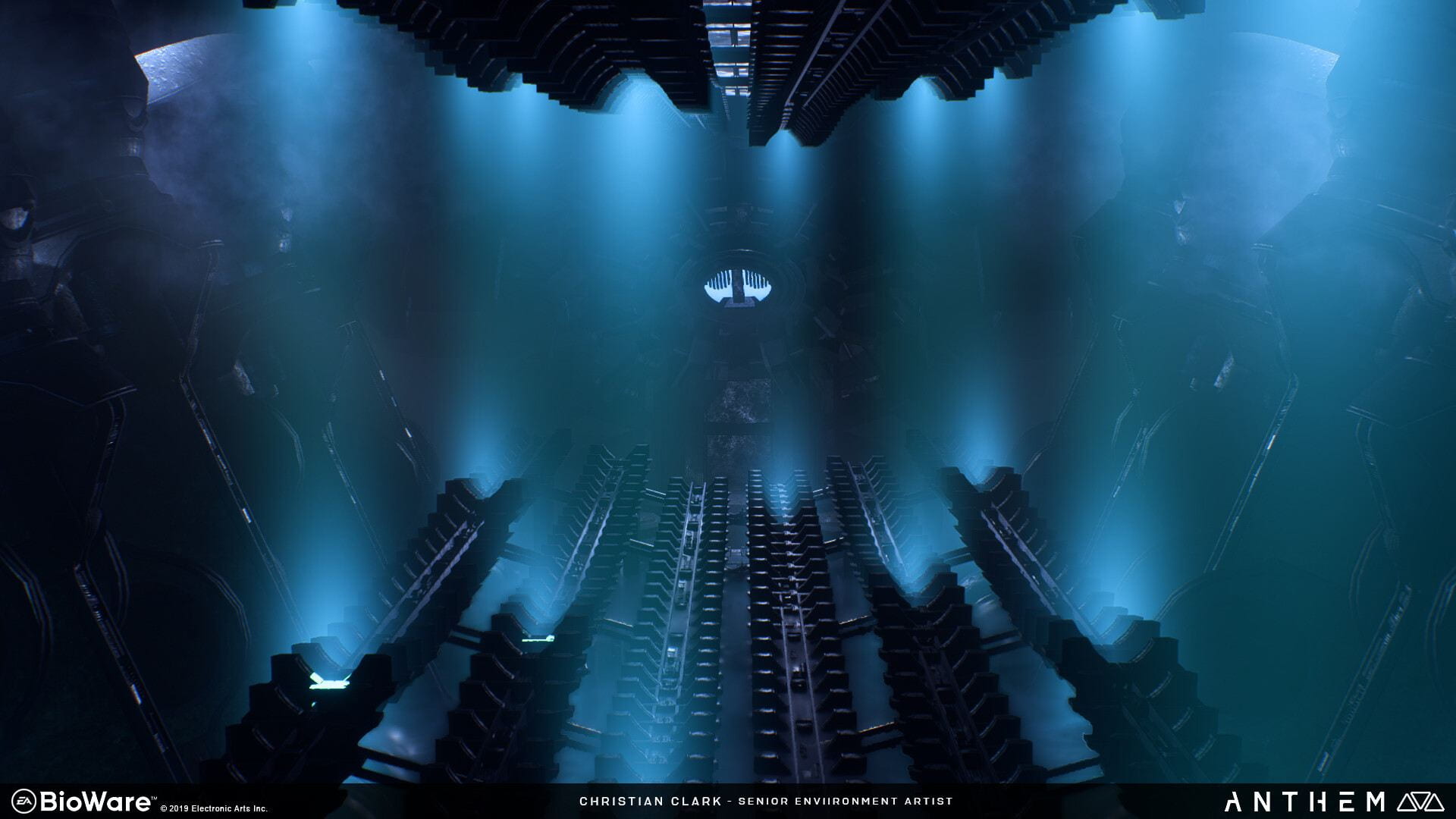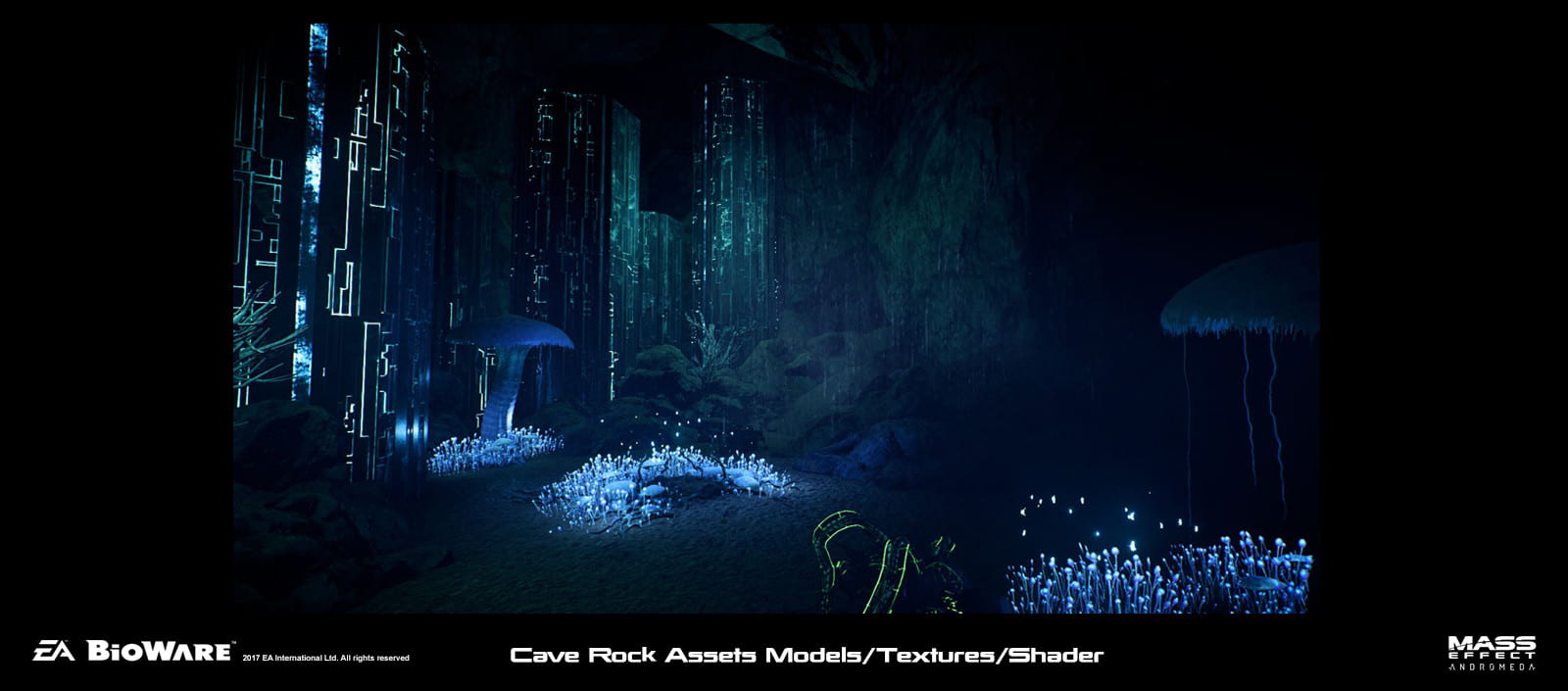When you pop in a video game disc into the tray of your console of choice, whether it’s invented by their owners Microsoft, Sony or Nintendo, what is the first thing you see upon your very first play-through experience? It would have to be the computer generated graphics. The level design, the scope and the digital construction of every building, forestation, gravel. The visual presentation of a game is one of the elements that can really entice people to purchase the next anticipated release. At the same time, we are very much intrigued as how such scale and innovation is put into a game’s graphic upon and after its release. To gather these substantial details, I made a trip towards Electronic Arts in Austin, TX, where I had the pleasure of meeting one of the graphic artists, Christian Clark, and he told me all of the secrets and insights of creating environments in specific levels and even weapons of certain action-adventure titles.
Clark is currently a Senior Environmental Artist for BioWare in Austin, TX and has been apart of BioWare/Electronic Arts for half a decade. After graduating in 2009 at Full Sail University, he started as an Environmental Artist for Spark Plug Games, creating still environments for iOS games such as Lost in Time: The Clockwork Tower, and he proceed to work as a Gun/Prop artist for The Binary Mill in Australia. Clark from 2011-2012, was also apart of Crystal Dynamics in San Francisco for the 2013 reboot of Tomb Raider, as a Level/Weapons artist and was employed for two years at Schell Games, an educational gaming company in Pittsburgh, PA. Clark said that he always loved video games since he was a kid, and he considered working for a video game company, like BioWare to be a ‘dream job’. Admitting that he always liked playing BioWare’s video games and is currently inhabiting a job there, he said that experiences when transition from job to the next felt a bit “different” based on the company. But his time at BioWare felt like a dream come true.
“I don’t think I’ve ever felt more at home than I do now at BioWare.” Christian said, “I get along with everyone I work with. It was definitely different going from a company like Spark Plug Games where you are making a small iOS game, to a huge IP (Intellectual Property) like “Anthem” or “Mass Effect: Andromeda” or “Tomb Raider” where you are working with 500 people all working on the same project.”
When asked about his experiences from companies like Crystal Dynamics and Spark Plug Games before he went into his present occupation, Clark said the he did have those experiences working for his previous positions, and that every prior experience or knowledge you would have, you’re going to continue to learn more as time goes by, and the criticisms that comes in from other people are ‘super helpful’, and all of the hard effort might pay off in the aftermath of the game’s official release.
“When the game gets out the door, you’re really proud of it,” Clark said, “despite how it gets reviewed, you know that you put what you could have in that game, and you couldn’t have done it any better, at least as an artist. This is how your legacy will exist.”
The conversation went into a more in-depth turn when asked about the amount of time it takes to design a weapon in Tomb Raider (2013) or a solitary map in the open-world third-person shooter, Anthem. Clark said that there are a lot of disciplines that get involved when making a weapon in a video game. There is a Weapons animator who is focused on constructing the animation and motion of a weapon, like a shotgun that fires when you cock the weapon or reload — including the character holding the exact weapon, the VFX artist who concentrated on the rifle blasts, of the bullet shells popping out of the gun, and the Weapon artist (which is what he was) actually digitally drawing out the weapon. Clark said that weapon design will take nearly a moth or two because there so many things that an artist team can run into, such as a collision error when Lara Croft (the main character of the Tomb Raider series) is crouching and the gun she’s possessing is clipping through a wall. The weapons design for a weapon in Tom Raider as a whole usually takes about a a month or two, however, designing a map for Anthem was a much different story.
“For something like Anthem, it really depends on the size of the space.” Clark said, “You could have a small micro dungeon that could take a month and a half, you [can] have a whole open region that’ll take three years, it really just depends on what you are working on.”
In the future, there are going to be dozens of aspiring students who want to have the exact same job that Christian’s environmental design, and what he offered in terms of insight for students was that if the student wants for of a design/engineering occupation, it’s going to require a ton of math and programing, and understanding simple fundamentals to a game such as his example of Monopoly, understanding how the game is designed and plays out as displayed by the rules of the game. He also added that if there a people who would like to earn the aspirational position, they have to do work day in and day out, especially when there are schools pumping out students that have degrees in Video Game Design. Clark more importantly said that it’s a very large market and a difficult industry to get into and a hard one to stay in, and you would have to spend upwards of a thousand hours in order to gain full expertise.
“You have to love it. If you don’t love it and have a passion for it, there’s no point in getting into it.” Clark said, in his last statement, “If you have for it and you do have a passion for it, it wouldn’t even seem like work and [you’ll] be willing to putting in the time anyway.”
Christian Clark is a very fascinating individual when it comes to designing, manufacturing weapons, levels and entire sections of an open world game and is a very insightful individual when referring to students who have future dreams and goals want to accomplish after the last step into college. BioWare is full of surprises, and Christian Clark’s artistic compositing, throughout his history of designing weaponry, and small to large levels, is truly in the eye of the BioWare beholder.
Video Edited with: DSLR Camera and Adobe Premiere Pro.
To view the rest of Christian Clark’s Artwork, click on:
https://www.artstation.com/mekhollandt


